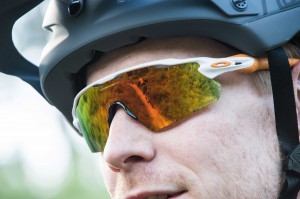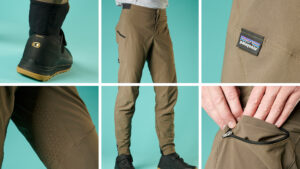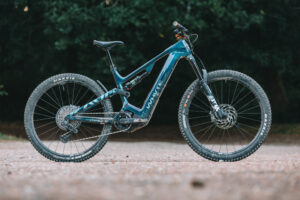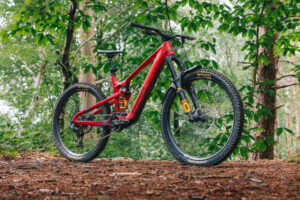Crank Bros Cobalt SL Crank £225
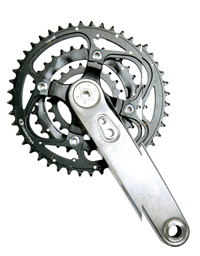 One length only: 175mm/44, 32, 22 chainrings/Weight: crank 624g, bottom bracket 181g/Ti bottom bracket £149.99/Cromoly bottom bracket £49.99
One length only: 175mm/44, 32, 22 chainrings/Weight: crank 624g, bottom bracket 181g/Ti bottom bracket £149.99/Cromoly bottom bracket £49.99
Contact: www.2pure.co.uk
Like Cannondale’s SI Hollowgram, the Cobalt is a bonded crank, but instead of using two halves of machined aluminium the Cobalt combines a forged 7075 aluminium base with a stamped stainless steel cover. The idea is to create a hollow crank that’s light, strong and abrasion resistant. It’s also a three-piece, meaning there are left and right crank arms and a separate ISIS bottom bracket unit. This comes either with a steel or titanium axle — it’s the latter we’re testing.
Crank Bros says it wants to appeal to XC racers; the sort of riders that buy other top-end cranks like XTR. So how does it fare against Shimano’s flagship unit?
The suggested retail for the XTR crank is £260 including bottom bracket. A Cobalt, with a titanium bottom bracket, is £115 more, while with a steel bottom bracket it is only £15 more expensive. An XTR crank and BB weighs 770g, and by factoring in the titanium axle the Cobalt still comes out 35g heavier. XTR crank arms come in 165 to 180mm lengths, in 2.5mm increments: Cobalts are 175mm only. Cobalt brackets are available with 108 or 113mm spindles to fit 73 or 68mm shells; XTR has a single length axle but can be spaced for the different bracket widths. Specialist tools are needed to remove the XTR cranks — they are included right now although Shimano is planning to discontinue this policy. Self-extracting 8mm bolts came already fitted the Cobalt arms. An XTR bottom bracket has a one-year warranty; the Cobalt gets five years.
In terms of performance there are a few differences — the Truvativ-made Cobalt rings don’t have the smooth shifting performance of Shimano. They may be harder wearing but upshifts felt crude by comparison and a lot slower. We felt the titanium axle twisted under hard efforts and, while Crank Bros claims the arms themselves are as stiff as XTR (it says it has bench tested them), it’s the interface between the cranks and bottom bracket you feel when riding. Depending on rider weight you may or may not notice this, but we did, which is why we’re currently evaluating a steel bottom bracket. As a way of saving weight the titanium BB is a good idea but it’s bad value at £2 per gram saved.
When you consider XTR is stiffer, lighter, cheaper and shifts better, you have to wonder whether the Cobalt has anything going for it. We asked Crank Bros, who initially repeated the reasons already stated on its website, but then one that wasn’t. Crank Bros says the Cobalt has a lower Q factor when compared to an integrated crankset. This is the distance between the pedals measured on the outside of the crank arms, and while there’s only anecdotal evidence a low Q factor is more efficient, it can resolve problems for riders with short legs. However, when we measured the Q factor on our Cobalts with a 113mm axle it came out at 170mm — identical to XTR.
So at the end of the day the Cobalt SL plays second fiddle to Shimano XTR in nearly every department. Is there any reason to buy it? Not that we can think of.
MBR RATING 6/10








